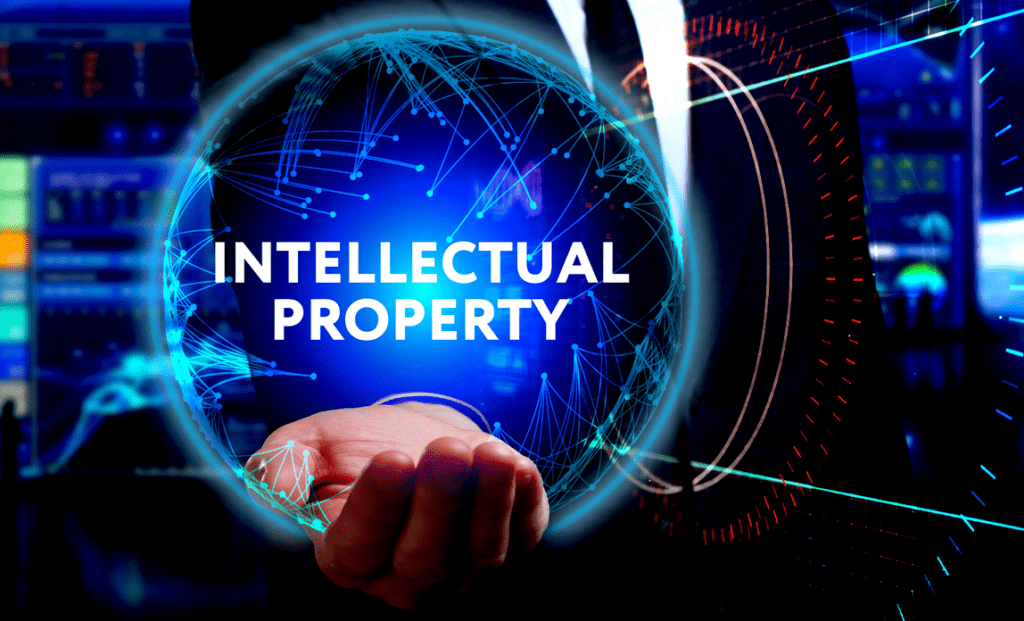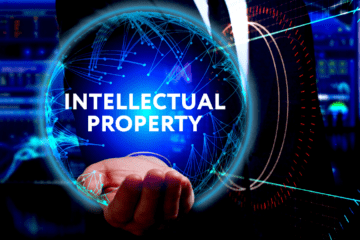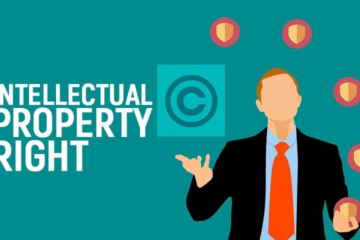
This Article is written by Bhumika Meena of B.A.LLB of 5th semester of Dharmashastra National Law University, Jabalpur, an intern under Legal Vidhiya
ABSTRACT
The rapid growth of open-source software (OSS) has revolutionized the technology landscape, offered immense collaboration opportunities and fostering innovation. However, the open nature of OSS presents significant intellectual property (IP) challenges. These challenges include concerns over copyright protection, licensing complexities, patent rights, and ensuring compliance with various IP laws across jurisdictions. OSS projects often feature multiple contributors, which complicates the ownership and distribution of rights. Additionally, the intersection of proprietary software and open-source contributions raises issues about the enforceability of IP protections. This article explores the key intellectual property challenges faced by open-source software developers, examines the legal frameworks that govern these issues, and suggests best practices for ensuring IP rights are respected while maintaining the ethos of openness and collaboration inherent in the OSS community.
KEYWORDS
Software development, source code, licensing methods, open-source software, and intellectual property rights
INTRODUCTION
Open-source software (OSS) has become a cornerstone of modern technological advancement, driving innovation, collaboration, and cost-efficiency across industries. The OSS model, characterized by its open access to source code and collaborative development, empowers developers to modify, share, and build upon existing codebases. This democratization of technology has fostered a culture of innovation, leading to the creation of robust and scalable software solutions that power everything from individual applications to global enterprises.
However, the inherent openness of OSS also brings a complex array of intellectual property (IP) challenges. Questions surrounding copyright, patent rights, and licensing agreements are amplified in an open-source environment where contributions from diverse sources intertwine. The coexistence of proprietary software and OSS often leads to disputes over ownership, compatibility, and legal compliance, creating a delicate balancing act between fostering innovation and protecting IP rights. This article delves into the multifaceted IP challenges in open-source software development, analysing how legal frameworks, licensing models, and industry practices intersect with the principles of openness. By examining real-world scenarios, it seeks to shed light on the evolving nature of these challenges and offers insights into navigating the complex IP landscape in the OSS ecosystem.
DEFINITION
In an “open source” software licensing model, the program’s source code is normally made accessible to users’ royalty-free, with conditions permitting additions, changes, and redistribution—though frequently with limitations. A variety of organizations may offer software support, training, upgrades, and other services, more often through commercial agreements. Open-source software is frequently, though not always, created collaboratively, with multiple people contributing different aspects of the finished product. The open-source community is also receiving programs and paid programming time from software businesses.
The legal rights accorded to authors, artists, inventors, and proprietors of works resulting from human intellect—such as inventions, literary and artistic creations, designs, names, symbols, and pictures used in commerce—are known as intellectual property rights. These rights stop others from using their works without permission and allow the authors to profit from them.
OPEN SOURCES SOFTWARE
The traditional theory of intellectual property (IP) argues that creators need protection to have enough incentive to produce new works. Without such protection, others could easily copy their creations, reducing the motivation to invest time and resources in innovation. IP laws prevent or delay copying, ensuring creators can benefit financially. Open-source software challenges this traditional view. Instead of using IP rights to maximize profits, open-source software uses these rights to ensure that software remains free and accessible to everyone. Developers of open-source software typically don’t earn money by selling the software itself but may earn through related services like consulting. The open-source model has sparked debates. Some believe it introduces a new way of collaboration that could extend to other areas, while others see it as an exception to the profit-driven market system. Economists study whether people contribute to open-source projects purely for non-financial reasons like reputation, learning, or community recognition, or because they are paid by organizations that benefit indirectly.[1]
Software is often protected as intellectual property through patents or copyrights. Both aim to prevent others from misusing an innovator’s work, but they serve different purposes. Copyrights protect the appearance of an idea, like the code itself, but not the underlying concepts. Under the World Trade Organization’s TRIPs agreement, software programs are considered literary works and are protected by copyright. This means once software is written and recorded, the copyright owner can stop others from using, copying, selling, or distributing it without permission. In addition to copyrights, software can be protected using trade secret laws, which keep certain information confidential. Patents also offer protection for the technical aspects of software. Other legal tools like licensing, technology protection measures, and trademarks can also be used to protect software. Developers can choose which methods to use for protection, but they are not required to use all available options.
INTELLECTUAL PROPERTY RIGHT CHALLENGES IN OPEN-SOURCE SOFTWARE AND CASE LAW [2]
Copyright Issues:
Intellectual property (IP) protection for software has been a topic of discussion since computer scientists, lawyers, and legislators realized that software could be authored, adapted, and reproduced using writable media and high-level programming languages. Copyright law grants the exclusive right to reproduce a work to the original creator, but this right is subject to certain limitations. The owner of a copyright can sells or license others to duplicate their work, and violating these rules leads to copyright infringement.A key concept in open-source software (OSS) is copyleft, which allows authors to share their software while requiring any modifications or derived versions to also be open-source under similar licenses. This is different from traditional copyright, where authors restrict the reproduction and distribution of their works. OSS creators typically use licenses like the General Public License (GPL) to govern how their software can be used, modified, and distributed.
The relationship between public access to software and the extent of copyright protection is critical in determining how software can be shared. Proponents of OSS argue that proprietary software limits societal benefits, and the open-source model offers a way to correct this issue by enabling broader access to software. SCO v. IBM Case[3], SCO accused IBM of illegally incorporating proprietary UNIX code into the open-source Linux operating system, which violated copyright and trade secrets. SCO demanded that Linux users obtain a license for the UNIX code. The court ruled that 326 lines of code in the Linux kernel were indeed proprietary, emphasizing how copyright laws can enforce open-source licenses. This case highlights the use of copyright laws to protect the rights of software authors even in the open-source context.
Software source code is protected by copyright law, which serves two purposes in the context of OSS:
• Preservation of Original Work: Copyright law safeguards the creator’s rights, allowing them to control licensing conditions.
• Compliance Monitoring: It can be difficult to enforce OSS license compliance, particularly when users purposefully or unintentionally break the terms of the license.
In the well-known case of Jacobsen v. Katzer,[4] a U.S. court acknowledged the financial and reputational damage that non-compliance causes and upheld the enforceability of open-source licenses under copyright law.
Patent Issues:
The Open-Source Community’s Software Patent Concerns
Software patents are often viewed with suspicion by the open-source software (OSS) community. OSS proponents contend that the success of open-source software proves the need for the current patent system. They think a thorough review of the patent system is necessary, especially with regard to software development. The development and dissemination of open-source software are thought to be seriously threatened by software patents.
The Open-Source Community’s Fears about Software Patents
Software patents are often viewed with suspicion by the open-source software (OSS) community. OSS proponents contend that the success of open-source software proves the need for the current patent system. They think a thorough review of the patent system is necessary, especially with regard to software development. The development and dissemination of open-source software are thought to be seriously threatened by software patents.
Free and the Model of Open-Source Software Licensing
The open-source community has created a license model that permits software to be freely altered and shared in response to these problems. This concept is predicated on the notion that software source code ought to be publicly available, enabling distribution and modification without the need for pricey licenses. Even software modifications must be shared under the same license, according to some licenses, such as the GNU General Public License (GPL). This procedure, called “copyleft,” guarantees that the right to share and alter software is preserved.
Issues with OSS Patent Protection
One of OSS’s main advantages is that it offers consumers who don’t want to pay for pricey proprietary software licenses a less expensive option. Patents on procedures covered by the code, however, have the potential to negate this advantage. The ability to patent the methods in source code is typically nullified when it is released under an open-source license, which reduces the significance of patent protection. members of the open source community would rather not have patent protection at all because of the time and effort required to deal with patent sharing. They consider it superfluous and detrimental to the open-source ideology.
Since patents safeguard functional parts of software, they pose a serious threat to open-source software. Unintentionally violating an existing patent could expose OSS contributors and the larger OSS community to legal action.
For instance, the well-known legal dispute between Google and Oracle regarding Android’s use of Java APIs brought to light the intricate relationship between OSS and patents.
Trademark Challenges:
Trademarks in OSS are used to protect the brand identity of a project. Unauthorized use of trademarks can lead to brand dilution or confusion. Balancing the open ethos of OSS with trademark protection remains a challenge.
Example: The Mozilla Foundation’s strict control over the Firefox trademark while allowing the source code to be freely used exemplifies this tension.
The term “open-source” cannot be trademarked because it describes the nature of the software. However, since consumers want a reliable way to know if software is truly open-source, the Open-Source Initiative (OSI) has created the OSI Certified certification brand. This brand identifies open-source licenses that meet the Open-source Definition and have been approved by the public and OSI. By using certification marks instead of trademarks, the focus is on the open-source methodology rather than a specific software product. This also avoids some issues in trademark law, like monitoring the mark and ensuring proper usage, while allowing more flexibility and equal responsibility for each developer.
Compatibility of Licenses :
Code from several sources, each subject to a different license, is frequently incorporated into OSS projects. The software’s use or distribution may be restricted if these licenses are incompatible. For instance, there are frequently practical and legal issues when code under a proprietary license is combined with code under the GPL.
Contributor and Governance Agreements:
Conflicts about ownership and the extent of contributions may arise from unclear governance frameworks and a lack of clear contributor agreements. Although they may discourage participation, Contributor License Agreements (CLAs) are frequently employed to mitigate such difficulties.
Moral rights :
Moral rights are important in open-source software, as the focus is on reputation and recognition rather than financial rewards. These rights are governed by laws in some countries, while others either don’t recognize them or allow software creators to waive them. In some places, moral rights are limited for software creators. For example, in India, the Copyright Act acknowledges the right to be identified as the author and to protect the integrity of the work, though it limits this protection when changes are made for backups or compatibility.
In countries that recognize moral rights, open-source software may have additional protection. For example, under German law, the author can use moral rights to prevent changes to the software, even if the open-source license allows modifications. This means the author can stop others from altering the software in certain situations.
Open-Source Software’s Effect on Intellectual Property
Open-source software, which allows anyone to view, modify, and distribute the code without restrictions, has significantly impacted intellectual property, especially in software development and distribution. Unlike the traditional model, where companies kept their source code private and charged for licensing, open-source software promotes innovation and collaboration by allowing users to access and alter the code. However, open-source software can make it harder for businesses to protect their intellectual property, as publicly available code can be copied and shared easily. This is particularly challenging for companies that rely on their software for their business model. On the other hand, open-source licenses offer a way to protect intellectual property. Some licenses require that any modifications or derivative works be released under the same license, helping to safeguard the original developer’s rights.
Overall, open-source software has a complex effect on intellectual property. While it fosters collaboration and creativity, it also challenges traditional software development models and intellectual property protection. Therefore, businesses must carefully consider how open-source software affects their intellectual property and explore alternative protection methods.[5]
RECENT DEVELOPMENTS
Complexities of Licensing and Compliance
Different licenses, each with unique terms and requirements, are used to distribute OSS. Permissive licenses, such as the MIT License, usually just require attribution to the original authors and permit widespread use with few limitations. To ensure that the software stays open source, copyleft licenses, like the GNU General Public licensing (GPL), require that any altered versions of the program be provided under the same licensing terms. It is essential to comprehend and abide by these licenses in order to prevent legal issues. Claims of intellectual property infringement brought on by noncompliance may give rise to legal issues and monetary obligations.[6]
Reusing Code and Violations of Copyright
Although it is advantageous, code reuse is encouraged by OSS’s collaborative nature, which poses questions around copyright infringement. Legal issues could arise if developers unintentionally include proprietary code in open-source projects. To reduce these risks, it is crucial to make sure that all code contributions adhere to license specifications and do not infringe upon pre-existing copyrights.
Risks Associated with Patents and Countermeasures
The issues surrounding patents are important in the OSS ecosystem. OSS initiatives are at risk from patent trolls, which are organizations that get patents in order to make money off of litigation rather than innovation. Organizations can combat this by implementing defensive tactics, such participating in patent pools or cross-licensing agreements, to guard against unjustified allegations of patent infringement.
Transparency and Open-Source AI
New intellectual property issues have arisen as a result of the growth of open-source artificial intelligence (AI). The Open Source Initiative (OSI) has established standards for “open” AI, including full code access, training data transparency, and training weights and settings disclosure. The goal of this action is to stop “open washing,” which occurs when businesses declare their products open source but don’t completely follow open-source guidelines. For example, Meta’s Llama model has come under fire for failing to satisfy OSI’s open-source requirements because of commercial limitations and a dearth of publicly available training data.[7]
Financial and Ethical Consequences
Small website owners now face higher operating costs as a result of AI startups like OpenAI and Anthropic’s aggressive data scraping tactics. These entities face higher bandwidth usage and server strain without remuneration, raising ethical considerations regarding the duties of giant AI businesses toward smaller digital entities.[8]
Abuse of the Label “Open-Source”
Concern regarding the improper use of the term “open-source” is growing. Companies like Meta have come under fire from the OSI for claiming that their AI models are open source even if they don’t completely adhere to open-source guidelines. Such actions have the potential to deceive users and compromise the open-source community’s integrity.
RECOMMENDATIONS
The following actions are suggested in order to remedy these issues:
- Global Standardization: Bringing together worldwide regulations on IPR and OSS licensing.
- Education and Awareness: Raising OSS users’ and contributors’ knowledge of the significance of IPR.
- Sturdy Contributor Agreements: Creating precise contracts that outline accountability and duties.
- Patent Reform: Implementing changes to lessen the possibility that OSS would be the target of baseless patent claims.
CONCLUSION
The open-source software (OSS) model has revolutionized software development, fostering innovation, collaboration, and widespread accessibility. However, its openness creates unique challenges in intellectual property (IP) protection, particularly in areas such as copyright, patents, trademarks, and licensing compliance. These challenges arise due to the blending of different legal frameworks, the dynamic nature of OSS projects, and the need to balance openness with the protection of creators’ rights. Copyright issues, especially in the context of copyleft licenses, are central to OSS discussions, as they raise concerns about the extent to which developers can modify and redistribute code. Additionally, software patents pose a significant threat to the open-source community, as patent infringement risks could stifle innovation. Trademark concerns, while less discussed, remain relevant as OSS projects must manage brand identity while adhering to their open-source ethos.
The licensing models, particularly the complexities of copyleft and permissive licenses, require developers and organizations to be vigilant in ensuring compliance. Moreover, the increasing presence of open-source artificial intelligence (AI) introduces new IP issues, such as the “open washing” of software, which challenges the integrity of the open-source movement.
To mitigate these challenges, global standardization of intellectual property regulations for OSS, greater awareness and education on IP rights among developers, robust contributor agreements, and patent reforms are essential. These steps will help create a more secure and sustainable environment for open-source development, ensuring that the ethos of collaboration and innovation continues to thrive while safeguarding creators’ rights.
In light of these considerations, it is clear that open-source software’s impact on intellectual property law is profound, shaping both the future of software development and the broader landscape of digital innovation. By addressing the existing legal challenges and adopting proactive measures, the OSS community can continue to thrive while respecting and enforcing intellectual property rights.
As the open-source landscape continues to evolve, staying informed about intellectual property challenges and best practices is essential for developers and organizations. By adopting clear policies for license compliance, actively managing patent risks, and engaging with the broader OSS community, stakeholders can navigate the complexities of intellectual property in open-source software development successfully. Embracing these strategies not only protects individual rights but also fosters continued innovation and collaboration within the open-source ecosystem.
REFERENCES
- Mark A. Lemley and Ziv Shafir, Who Chooses Open-Source Software, Vol. 78, No. 1 (Winter 2011), The University of Chicago Law Review, pp. 139-142, 2011
- Eric Ludwig, Open Source Software: Licensing Compliance,& Intellectual Property Issues, Ludwing APC, https://ludwigiplaw.com/open-source-software-licensing-compliance-intellectual-property-issues/.
- Aaron Hall, The Impact Of Open Source On Intellectual Property Rights Explained, https://aaronhall.com/the-impact-of-open-source-on-intellectual-property-rights-explained/.
- https://www.theverge.com/2024/10/28/24281820/open-source-initiative-definition-artificial-intelligence-meta-llama.
- Darius Rafieyan, Like digital locusts, OpenAI and Anthropic AI bots cause havoc and raise costs for websites, BUSINESS INSIDER, https://www.businessinsider.com/openai-anthropic-ai-bots-havoc-raise-cloud-costs-websites-2024-9?
- Jacobsen v. Katzer, 535 F.3d 1373 (Fed. Cir. 2008).
- Oracle America, Inc. v. Google Inc., 886 F.3d 1179 (Fed. Cir. 2018).
- European Commission, “Open Source Software Strategy 2020-2023,” available at EU Website.
- Mozilla Foundation, “Trademark Policy,” available at Mozilla Website.
- Karen Sandler, “Copyleft Compliance,” Software Freedom Conservancy, 2020.
- 4JusCorpusLJ46 (1).pdf
- Lerner, J., & Tirole, J. (2005). “The Scope of Open Source Licensing.” The Journal of Law, Economics, and Organization, 21(1), 20-56.
- Graham, M., & Roberts, D. (2013). “Open Source Software Licensing: Software Freedom and Intellectual Property Law.” Prentice Hall.
[1] Mark A. Lemley and Ziv Shafir, Who Chooses Open-Source Software, Vol. 78, No. 1 (Winter 2011), THE UNIVERSITY OF CHICAGO LAW REVIEW, 139-142 (2011)
[2] Aayush Garg & Nisha, Open-Source Software and Intellectual Property Rights, 4 JUS CORPUS L.J.
[3] SCO Group, Inc. v International Business Machines Corp. 879 F.3d 1062
[4] Jacobsen v. Katzer, 535 F.3d 1373 (Fed. Cir. 2008).
[5]GLOBAL INTELLECTUAL PROPERTY CONVENTION, Intellectual Property Challenges in the Digital Age – GIPC, (last visited Jan. 20, 2025).
[6] Eric Ludwig, Open Source Software: Licensing Compliance,& Intellectual Property Issues, LUDWING APC (Jan. 20, 2025, 1:16 PM), https://ludwigiplaw.com/open-source-software-licensing-compliance-intellectual-property-issues/.
[7] Kylie Robison, Open- Source AI must revel its training data, per new OSI definition/ Meta’s Llama does not fit OSI’S new definition,20th January 2025, 1.29 PM, https://www.theverge.com/2024/10/28/24281820/open-source-initiative-definition-artificial-intelligence-meta-llama.
[8] Darius Rafieyan, Like digital locusts, OpenAI and Anthropic AI bots cause havoc and raise costs for websites, BUSINESS INSIDER, ( Jan. 20, 2025, 1:36 PM) https://www.businessinsider.com/openai-anthropic-ai-bots-havoc-raise-cloud-costs-websites-2024-9.
Disclaimer: The materials provided herein are intended solely for informational purposes. Accessing or using the site or the materials does not establish an attorney-client relationship. The information presented on this site is not to be construed as legal or professional advice, and it should not be relied upon for such purposes or used as a substitute for advice from a licensed attorney in your state. Additionally, the viewpoint presented by the author is personal.




0 Comments